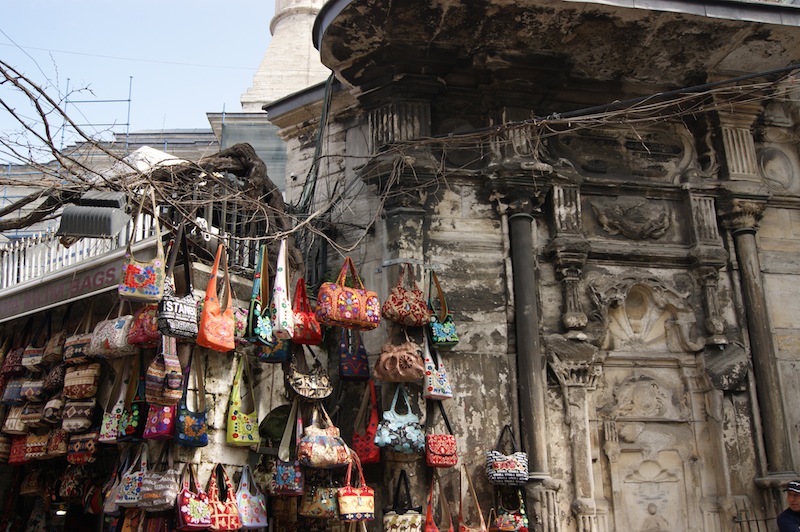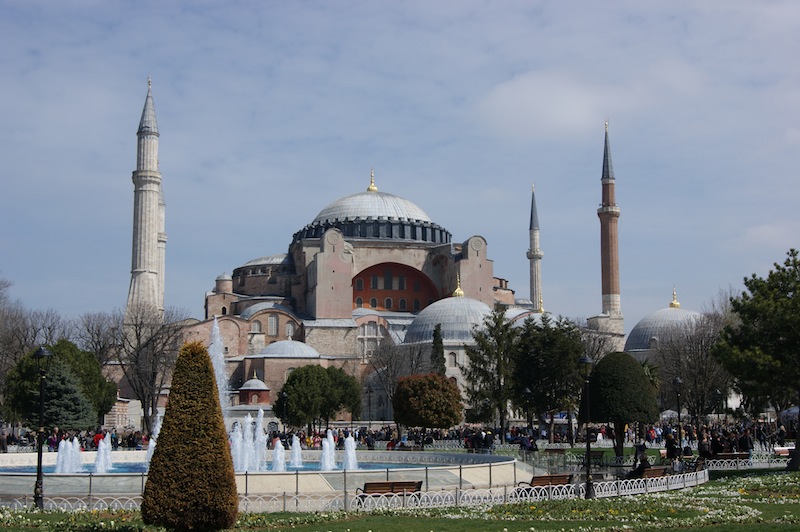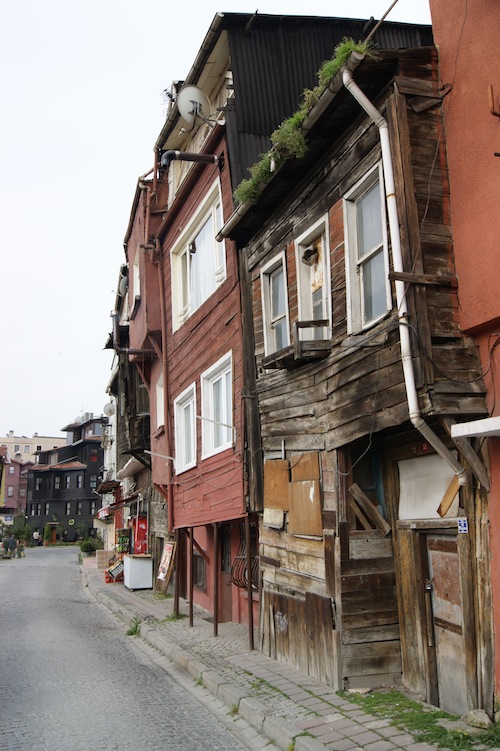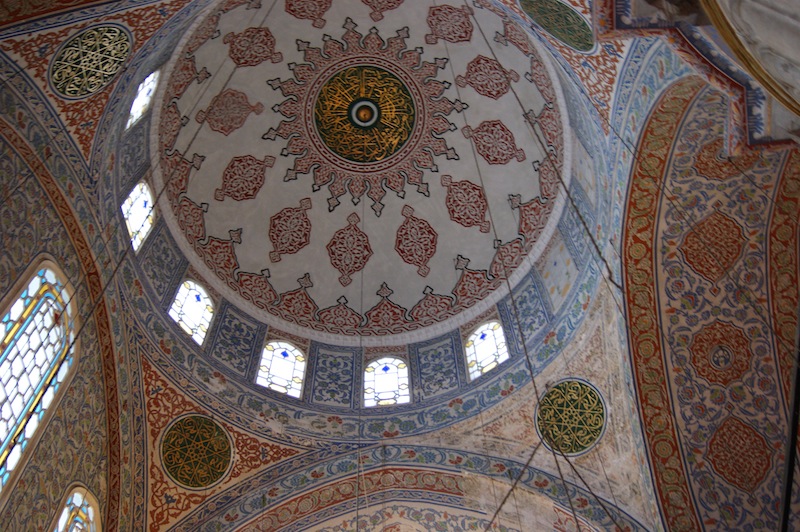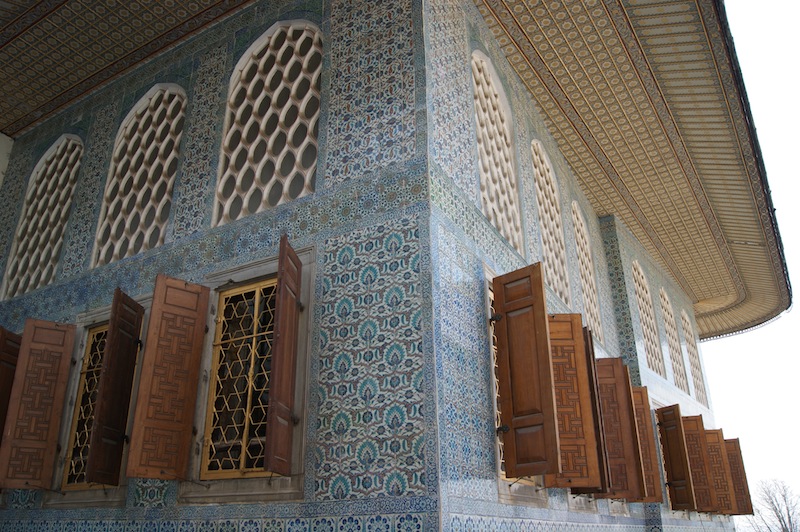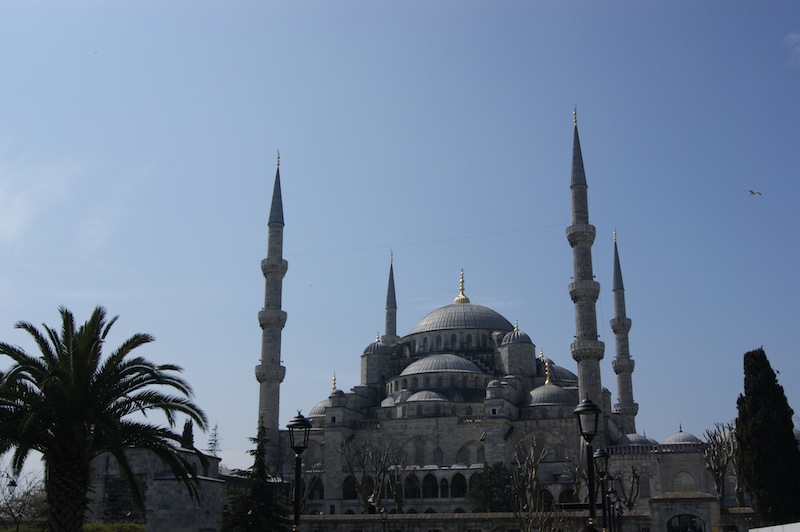Sultanahmet is the historic heart of Istanbul, the most famous of Turkey’s cities. It may not be the capital but it’s the only city in the world that sits astride Europe and Asia.
Just a few months after we visited Istanbul in 2013, it was gripped by the worst riots in years. Historic Sultanahmet escaped the worst of those depressing but perhaps not surprising protests, which were concentrated on Taksim Square – across the stretch of water known as the Golden Horn. Terrorism has reared its ugly head in the city a few times too.
For those of us staying in Sultanahmet, Taksim felt as if it were miles away because Istanbul is a massive city, effectively several thrown together as one. There’s so much to see and do that there was no chance we’d ever get to do it all in one trip and, indeed, we never did make it to Taksim.
We concentrated our stay on Sultanahmet, the district on the European side of the Bosphorus that contains the main attractions and is where most tourists end up. It’s a UNESCO World Heritage Site and where we found the Aya Sofya, the sprawling Topkapi Palace and the marvellous Blue Mosque. It’s where the Roman conquerors established the capital of their Eastern empire – Constantinople – back when Rome itself was crumbling. It’s where the Ottoman rulers in turn based the government of their empire.
Sultanahmet is at times modern, spic and span and neatly packaged for the tourist. A lot of money has been spent giving key areas a facelift, and a lot continues to be spent on mosques, historic buildings and essential public transport.
But there’s plenty of the old Istanbul in Sultanahmet, as we found when we wandered into its back streets. Amid the beautifully renovated wooden properties that lined its cobbled streets, we often found other buildings that were falling to pieces, leaning precariously and victims of neglect.
Many of the streets run down to the sea, lined with cheap souvenir shops and trendy boutiques, small hotels and restaurants. Stray cats stalked them by the score and tulips provided splashes of spring colour. In some places, perhaps surprisingly, it reminded us of San Francisco. Other parts of the district, particularly near the Grand Bazaar, are more developed, more commercial and somewhat less charming. But even here we turned corners to find quaint mosques, a tiny shaded park, a well-tended cemetery.
Aya Sofya is a must-see. Once a church, then a mosque and museum, it’s one of the two giants of Sultanahmet and squats monumentally atop the hill opposite the Blue Mosque. Its minarets look like rockets all set for a mission to deep space. Built in the 6th century on the orders of Emperor Justinian and much added to over the centuries, it’s absolutely vast and is capped by an immense dome. After queueing for ever to get in, we discovered remains of Christian mosaics, explored the first-floor galleries, took photos of the huge wooden discs hanging from its walls displaying gold Arabic calligraphy. It is overwhelming and absolutely extraordinary.
The Blue Mosque, or Sultanahmet Camii to give it its proper name, sits opposite. Where the Aya Sofya can be gloomy, the Blue Mosque is perfectly proportioned on the outside, and light, colourful and airy inside. The historic blue tiles that give the mosque its name are perfectly in tune with the colourful painted domes and the rich red of the carpet.
Cool and inviting it may be but the columns holding up its main dome are massive in every way. We were shown round by an old man who volunteered for the role but then politely demanded generous compensation. I felt duped – and doubtless we weren’t the first to fall for his charms – but at least we were able to visit parts of the building roped off to ordinary mortals. Nearby is the Arasta Bazaar, a pleasant shopping street that was built to help fund the mosque through the payment of rents.
The Grand Bazaar, or Kapali Çarsi, is one of the city’s most famous sites and the largest covered bazaar in the world, where anything and everything anyone could possibly want is available to buy, not just rugs, spices, leather and gold but also fancy fashions and designer jewellery. We didn’t get pestered nearly as much as I thought we would and we left empty handed.
One of the most fascinating attractions in Sultanahmet is the Basilica Cistern, Yerebatan Sarniçi. Featured in the James Bond film From Russia With Love, when Bond went below ground to spy on the Russian embassy, this cavernous, damp space was built to store and supply water to the city, and is supported by dozens of columns. Eerily lit and one of many such structures built for the city, the water that remains in the cistern is now full of fish. In one corner are columns with chunky bases featuring the carved visage of Medusa, both of which are thought to have been brought from another Roman building in Istanbul, an early example of recycling. Again, we queued for ages to get in but it was worth the effort for the cistern was full of atmosphere.
The Topkapi Palace, which we visited on a sweltering day, is a large complex that was once home to the Sultans, their families and officials. It boasts beautiful gardens, excellent views of the city and a compelling collection of ornate state rooms. The Harem is somewhat more intimate, where the royal family lived away from the ceremonies of state. I particularly appreciated the glorious, colourful tiles that decorate so many walls and ceilings, particularly in the circumcision room (ouch). Getting around the palace, though, proved to be hard work in high season – crowd management didn’t seem a strong point and queues were everywhere.
The Great Palace Mosaic Museum may be small but we appreciated its incredible mosaics, featuring hunting scenes, animals fighting animals and mythical beasts. They were discovered on the site of the great palace that was built and then enlarged by the Roman emperors across a large swathe of Sultanahmet.
The Hippodrome has been a popular gathering and promenading spot in the city for centuries. Once the sporting heart of Constantinople, the U-shaped circus hosted chariot races in imperial times and has, more recently, been given a facelift. The most obvious remains of the base structure can be seen behind the Eresin Crown Hotel, which is coincidentally where we spent our stay.
Sultanahmet didn’t prove to be the best place in Istanbul for shopping, eating or drinking. Instead, we crossed the Galata bridge and headed to Beyoglu for the best of the nightlife. Booze isn’t cheap in Istanbul, but the locals know how to party. The bars in the side streets were invariably rammed, and it was often difficult to get a seat in the restaurants.
Sultanahmet was more restrained, offering everything from cheap and cheerful restaurants and bars to relaxed cafes and expensive options, including the elegant Four Seasons Hotel Sultanahmet, housed in a charming old prison building. The hotel was one of the few places where service was anywhere near good in the city. In two other restaurants, my main meal was forgotten. In others, attentiveness and politeness were virtually non-existent.
If we ever return to Istanbul it’ll be for the sights, not the service.

